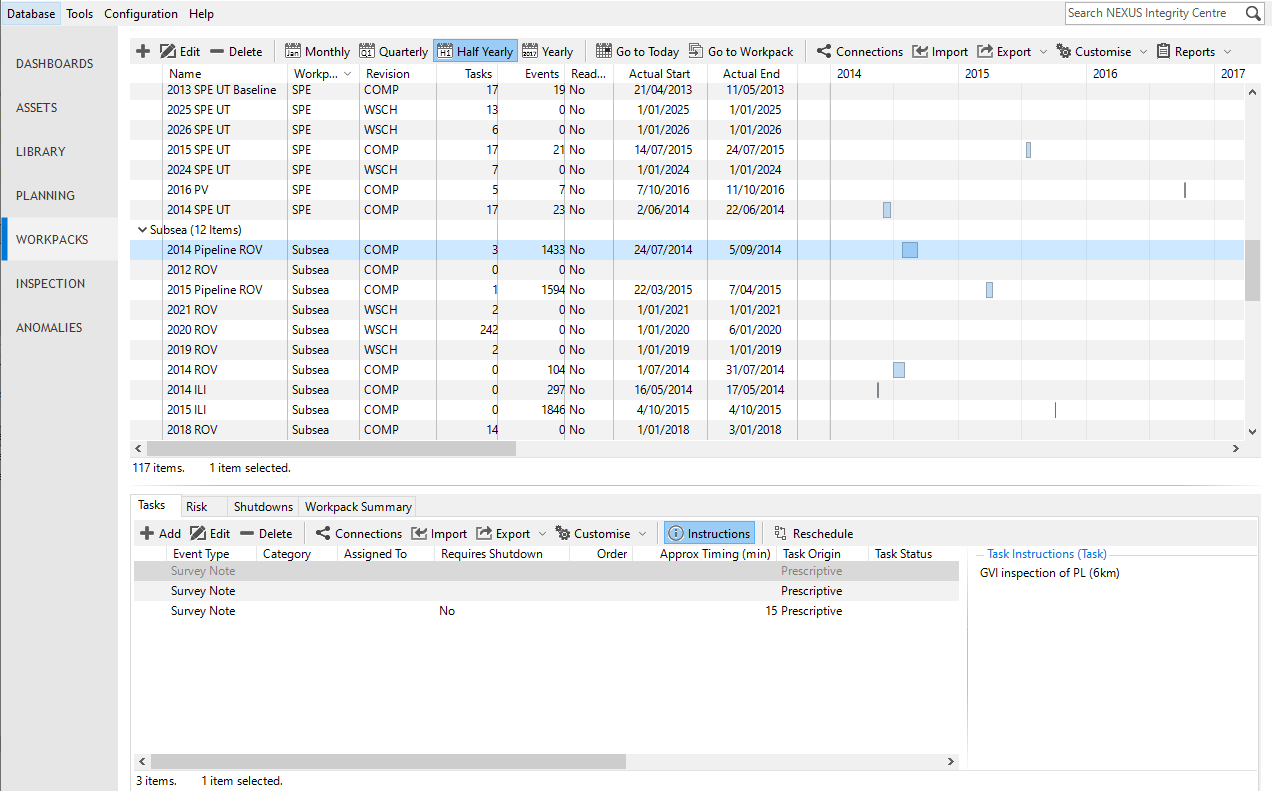WORKPACKS Screen
On the WORKPACKS screen, you can perform the following actions:
Add, edit or delete workpacks (see Workpacks)
Review workpack details and check the schedule of tasks by workpacks (see Check Schedule by Workpack)
Manage tasks (see Tasks)
Assign and review risk models (see Risk)
Schedule shutdowns (see Shutdowns)
Export workpack summary (see Workpack Summary)
Check Schedule by Workpack
In the top half of the WORKPACKS screen, you can see a list of workpacks with their details and a Gantt chart that shows the start and end date for each workpack in a calendar form.
On this screen area, you have the following options:
Add, edit, or delete workpacks: See Workpacks.
Change calendar granularity: Use the Monthly, Quarterly, Half Yearly, or Yearly toolbar buttons to adjust the time scale. For example, selecting Monthly displays one column per calendar month.
Go to Today: Scrolls the calendar to the current date. This button is inactive if the calendar does not cover today’s date (because all your workpacks are in the past, or all your workpacks are in the future, or no workpacks have start/end dates).
Go to Workpack: Scrolls the calendar to the start date of the selected workpack. If multiple workpacks are selected, it scrolls to the last one selected.
Tip
Use the grid Grouping functionality to group and filter workpacks. It is a quick and easy way to drill down to the workpacks that you are particularly interested in reviewing. By default, this grid is grouped by Revision.
If you select a workpack in the list, the tasks included in the workpack is displayed on the Tasks tab in the bottom half of the screen. For more information, see Tasks.
Workpack Toolbar
Toolbar Option
Description
See Edit Workpacks.
Deletes the selected workpack.
Allows you to choose the ‘resolution’ of the grid. For example, if you select Monthly, there will be one column for each calendar month.
Scrolls the calendar to the current date. This button is inactive if the calendar does not cover today’s date (because all your workpacks are in the past, or all your workpacks are in the future, or no workpacks have start/end dates).
Scrolls the calendar to the start date of the selected workpack. If multiple workpacks are selected, it scrolls to the last one selected.
See Connections.
See Import.
See Export.
See Customise.
See Reports.
Report Table Sources
To extract workpack data into a report template, use the System Table titled Workpack as the primary Table Source. For more information see Configure Report Templates.
